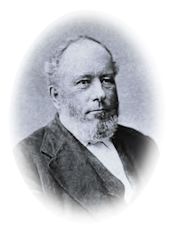Nov. 20. Yesterday, having a day to myself, I visited Annapolis. I was greatly interested in visiting the old State House on account of the historic memories that cluster around it. I was shown up in the hall where Washington, in December, 1783, resigned his commission in the army to the Continental congress, then in session at this place. His resignation was a very solemn and formal affair, and as I stood in this venerable hall, my thoughts went back to those grand old days when our fathers struggled for independence. At the close of the revolution, Maryland offered to cede Annapolis as the Federal capital, but it was thought best to select a site on the Potomac river. Annapolis was originally designed as a great place, being the capital of the state, and possessing a fine harbor with a great depth of water, and long before Baltimore was at all noted, was the seat of wealth, refinement and extensive trade; but it is now chiefly distinguished as the seat of the United States Naval academy. The state house and Episcopal church are located in the centre of the city, and from these radiate all the streets.
To the eye of the stranger, the antique, moss-covered and vine-clad houses, with their deep embrasured windows and peculiar architecture, present a singular appearance. The Naval academy and Episcopal college present a striking contrast to the rest of the town. The buildings are large and of modern style, the grounds around them spacious and tastefully laid out. The Naval academy, located on the west side of the town, comprises an area of several acres, enclosed by a high brick wall. The buildings, of which there are several, are located partly on the water side, the balance on the east side next to the wall. The wharfage and boat houses are extensive and commodious. On the north side, and commanding the harbor, is an old brick building with a few port holes, and mounting a few old iron guns. This they call the fort, and I should suppose a few shots from one of our gunboats would level it to the ground. The park is beautifully laid out with drives and walks, and adorned with a great variety of forest and ornamental trees. The grounds and trees, however, are being sadly damaged by the soldiers and by driving army wagons across.
Here are also several handsome monuments erected in memory of departed naval heroes, among which I may mention one erected in honor of the gallant Capt. Herndon. It is a plain granite shaft, about twenty feet high, and on each of the four sides is engraved simply the name, Herndon. I noticed this more particularly, as I remembered the circumstances of his death. He ranked as lieutenant in the navy, but at the time of his death, in September, 1857, was in command of the steamer Central America, of the New York and California line. The Central America was on her passage from Aspinwall for New York, when she foundered during a terrible storm off Cape Hatteras, and out of 600 persons on board, only 200 were saved. Capt. Herndon superintended the getting off of as many of his passengers as he could, and the last words he was heard to utter were, “I will never leave the ship until my passengers are all off,” and standing on the wheel house, went down with his vessel. Brave, gallant Herndon!
